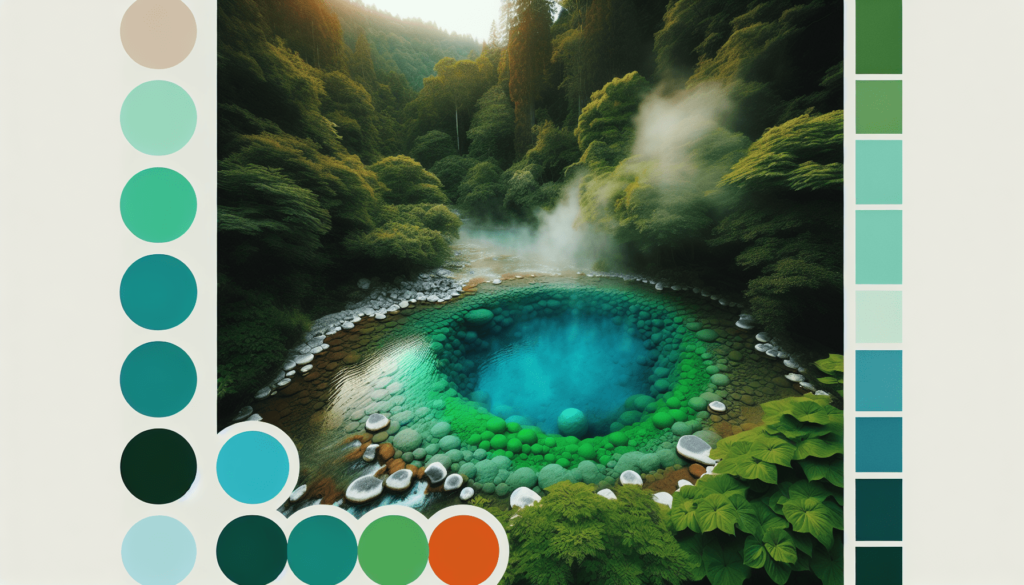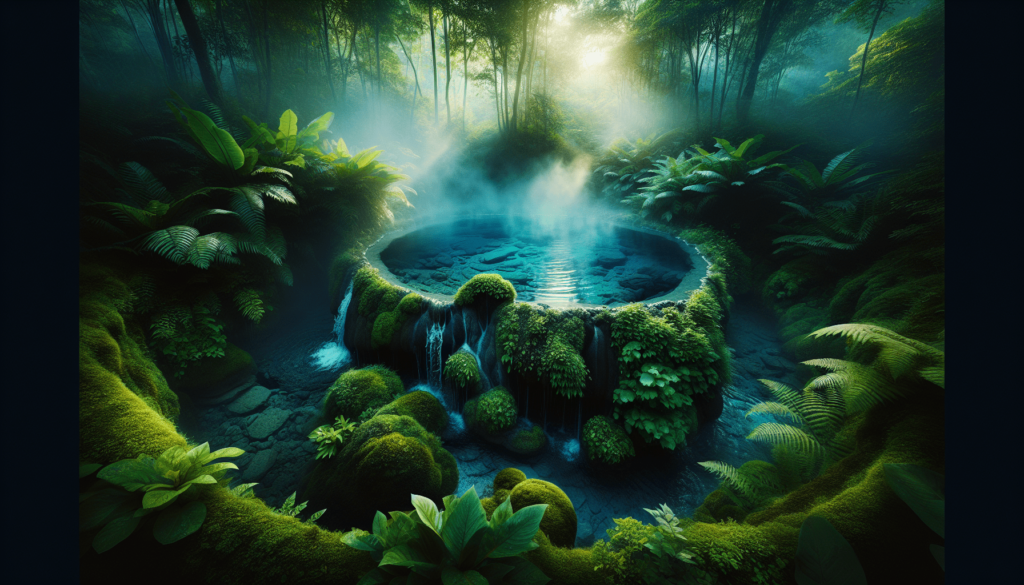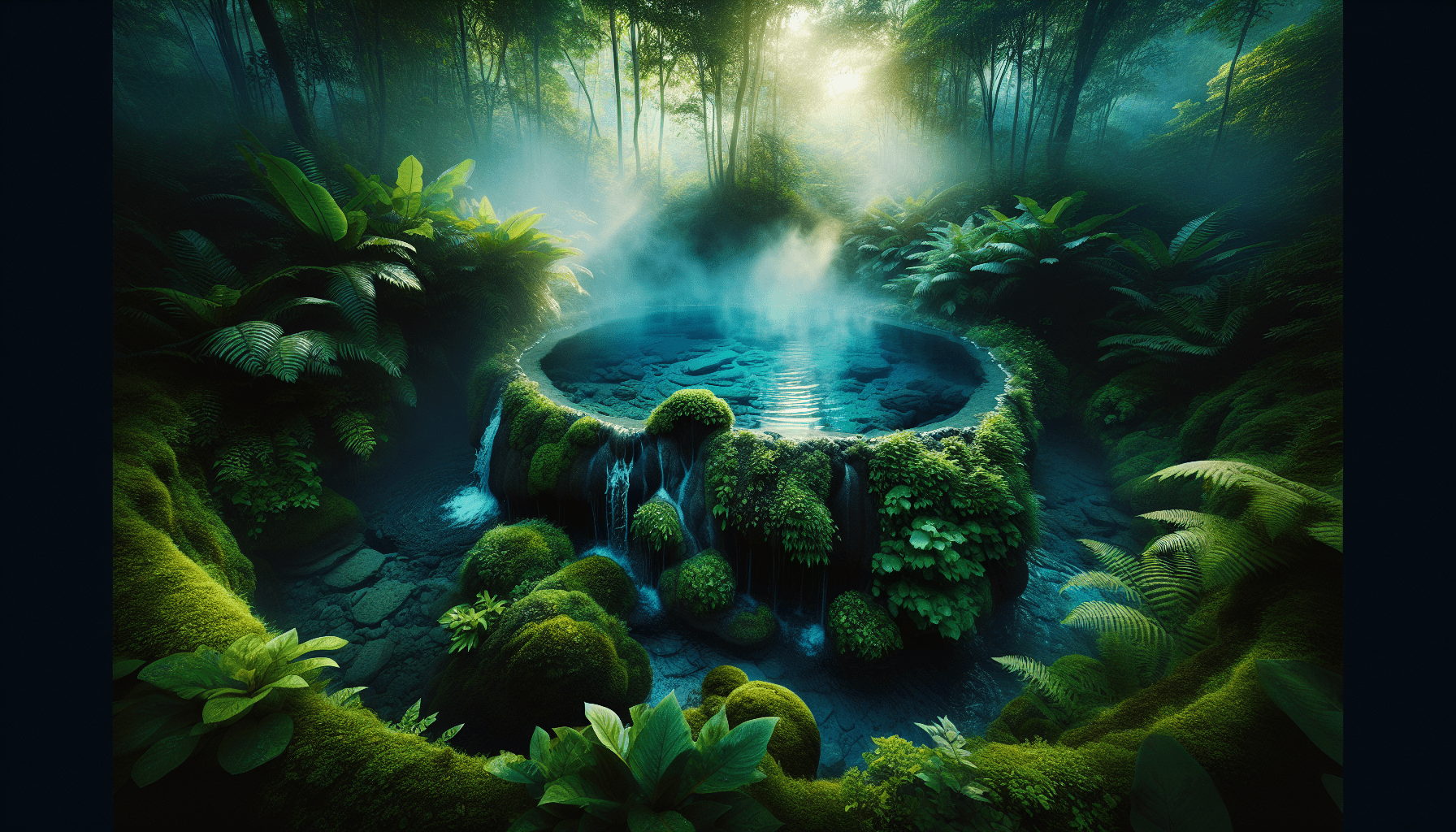Imagine being surrounded by the soothing warmth of natural hot springs, with steam rising from the crystal-clear waters. It̵7;s a moment of tranquility and relaxation, but have you ever wondered how long you should stay in these rejuvenating pools? Finding the perfect balance of time between soaking and overheating is essential to fully enjoy the benefits hot springs have to offer. In this article, we will explore the factors to consider when determining the ideal duration for your hot springs session, ensuring that you make the most of your thermal oasis experience.
Health Benefits of Hot Springs
Hot springs have been cherished for their healing properties for centuries. Soaking in hot springs can offer numerous health benefits that promote relaxation, pain relief, improved blood circulation, detoxification, and enhanced skin health. Let’s dive deeper into these benefits.
Promotes relaxation and stress relief
One of the primary reasons people seek out hot springs is for the unparalleled relaxation they provide. The warm water and soothing environment can help melt away stress and tension from your body and mind. As you recline in the natural, mineral-rich waters, you can feel your worries fade away, and a sense of calm wash over you.
Relieves muscle and joint pain
Hot springs have long been recognized for their ability to relieve muscle and joint pain. The warm water helps to relax tight muscles and improve flexibility. The mineral content in the springs, such as sulfur and magnesium, can also provide natural pain relief and reduce inflammation. Whether you suffer from chronic pain or have sore muscles from a strenuous activity, soaking in hot springs can bring much-needed relief.
Improves blood circulation
When you soak in hot springs, the warm water causes your blood vessels to dilate, promoting better blood circulation throughout your body. This improved circulation can help deliver vital nutrients and oxygen to your organs and tissues, aiding in their optimal functioning. Additionally, the increased blood flow can help remove waste products and toxins from your body, leaving you feeling rejuvenated and energized.
Detoxifies the body
Hot springs are known for their detoxifying properties. The high mineral content in the water helps to draw out toxins from your body through a process called reverse osmosis. As you soak, the minerals penetrate your skin, stimulating the elimination of toxins and impurities. This detoxification process can leave you feeling cleansed from the inside out and can even promote clearer, healthier skin.
Enhances skin health
Soaking in hot springs can do wonders for your skin. The mineral-rich water can help to improve skin hydration, reduce inflammation, and promote a healthy complexion. The minerals present in hot springs, such as sulfur and silica, are known to have therapeutic effects on various skin conditions like eczema, psoriasis, and acne. Regular hot springs’ soaks can leave your skin looking and feeling nourished, radiant, and rejuvenated.
Factors That Influence Soaking Time
While hot springs offer numerous benefits, the duration of your soak can significantly impact your experience. Several factors can influence how long you should spend in the hot springs. Let’s explore these factors in detail:
Temperature of the hot springs
The temperature of hot springs plays a crucial role in determining the ideal soaking time. Each hot spring has its unique temperature, ranging from lower temperatures around 95-100°F to higher temperatures above 110°F. Hot springs with lower temperatures are generally suitable for longer soaking sessions, while hotter springs may require shorter durations to avoid overheating.
Personal tolerance to heat
People have varying tolerance levels when it comes to heat. Some individuals can comfortably soak in hot springs for extended periods, while others may find higher temperatures unbearable. It is essential to listen to your body’s signals and adjust your soaking time accordingly. If you start feeling lightheaded, dizzy, or experience any discomfort, it’s time to end your soak and cool down.
Specific health conditions
Certain health conditions may affect how long you should soak in hot springs. If you have any underlying medical conditions, it’s crucial to consult with your healthcare professional before indulging in hot springs therapy. Conditions such as cardiovascular issues, high blood pressure, or skin infections may require you to limit your soaking time or avoid hot springs altogether.
Duration of the visit
The duration of your visit to the hot springs also impacts your soaking time. If you plan to spend an entire day at the hot springs, you may opt for shorter, intermittent soaking sessions rather than one long soak. Pace yourself and allow your body time to relax and recover between sessions.
Altitude of the hot springs
Altitude can have an effect on your body’s response to hot springs. At higher altitudes, the air is thinner, which can make you feel more lightheaded or fatigued. Take this into consideration when determining your soaking time and listen to your body’s signals carefully.

Recommended Soaking Times by Temperature
To make the most of your hot springs experience, it’s helpful to have a general guideline for soaking times based on temperature ranges. Keep in mind that these recommendations are approximate, and individual preferences and health conditions should always be considered.
Lower temperatures (95-100°F)
For hot springs with lower temperatures, it is generally safe to soak for longer durations, ranging from 20-30 minutes. The lower temperatures make it easier for the body to regulate its temperature, allowing for a longer, more relaxing soak without overheating.
Moderate temperatures (101-104°F)
Moderate temperature hot springs are still comfortable for longer soaking sessions. Aim for 15-20 minutes of soak time, taking intermittent breaks to cool down if needed. This temperature range provides a balance between relaxation and avoiding overheating.
Higher temperatures (105-110°F)
Hot springs with higher temperatures require shorter soaking times to prevent overheating and dehydration. Limit your soak to about 10-15 minutes, ensuring you stay hydrated and take breaks as needed to cool down and rehydrate.
Extreme temperatures (above 110°F)
Extreme hot springs temperatures are not recommended for extended soaking. Brief, 5-10 minute dips can provide a quick burst of therapeutic benefits, but anything longer can pose a risk of heat exhaustion or dehydration. Exercise caution and pay close attention to your body’s response in extreme temperature hot springs.
Dos and Don’ts of Hot Springs Soaking
When visiting hot springs, it’s important to observe proper etiquette and follow certain guidelines to ensure a safe and enjoyable experience. Here are a few dos and don’ts to keep in mind while soaking:
Do drink plenty of water
Staying hydrated is crucial during hot springs soaking. The warm water and steam can cause increased sweating, leading to dehydration if you don’t replenish your fluids. Drink plenty of water before, during, and after your soak to keep your body hydrated and prevent any potential health issues.
Do take breaks and listen to your body
Even if you’re enjoying your time in the hot springs, it’s essential to take periodic breaks. Listen to your body and step out of the water if you start feeling lightheaded, dizzy, or overheated. Find a shady spot to relax, cool down, and let your body recover before resuming your soak.
Do wear appropriate swimwear
When visiting hot springs, it’s vital to wear appropriate swimwear to maintain cleanliness and hygiene. Opt for a swimsuit made from breathable fabric that allows for easy movement. Avoid wearing street clothes or garments that may leave behind trace residues in the water.
Don’t stay in too long
While soaking in hot springs can be incredibly relaxing, it’s important not to overdo it. Prolonged exposure to hot water can lead to overheating, dehydration, and potential health risks. Always pay attention to your body’s signals and limit your soak time accordingly.
Don’t soak if pregnant or with certain medical conditions
If you are pregnant or have specific health conditions, it’s crucial to consult with your healthcare professional before taking a dip in hot springs. Certain conditions, such as high blood pressure, heart problems, or skin infections, may be exacerbated by hot springs therapy. Your healthcare provider can guide you on the best course of action based on your individual circumstances.

Determining Your Ideal Soaking Time
Finding your ideal soaking time in hot springs may require some trial and error. Here are a few tips to help you determine the duration that works best for you:
Start with shorter sessions
If you’re new to hot springs or uncertain about your tolerance to heat, start with shorter soaking sessions. Begin with 10-15 minutes and gradually increase the time as you become more comfortable. Pay attention to how your body responds and adjust your soak time accordingly.
Listen to your body
Your body knows best. Pay close attention to any signs of discomfort, overheating, or dehydration. If you start feeling lightheaded, fatigued, or experience any other adverse effects, it’s time to end your soak and give your body a chance to recover.
Consult with a healthcare professional
If you have any underlying health conditions or concerns, consult with a healthcare professional before indulging in hot springs therapy. They can provide personalized advice based on your medical history and help you determine the optimal soaking time and temperature for your situation.
Consider the temperature and personal preferences
The temperature of hot springs can greatly impact your soaking time. Take into account the suggested soaking times based on temperature ranges and adjust according to your personal preferences. Some individuals may find they prefer shorter soaks at higher temperatures, while others may enjoy longer sessions at lower temperatures. Experiment and find what works best for you.
Maximizing Your Hot Springs Experience
To make the most of your hot springs experience, consider the following tips:
Plan for a full day at the hot springs
Hot springs offer more than just soaking. Plan for a full day out, allowing ample time to explore the surroundings, relax in the pools, and take breaks in between. Embracing the entire experience will enhance your enjoyment and help you fully reap the benefits of the hot springs.
Combine soaking with other relaxation techniques
Hot springs complement various relaxation techniques. Consider bringing a book to read, practicing meditation or deep breathing exercises, or simply enjoying the peaceful ambiance. Immersing yourself in a holistic approach to relaxation will amplify the benefits of the hot springs and leave you feeling renewed and rejuvenated.
Try alternating hot and cold dips
For an invigorating experience, alternate between hot and cold dips. Many hot springs offer cold plunge pools or nearby natural bodies of water for this purpose. The contrast of temperatures stimulates blood circulation, invigorates the senses, and can provide a unique sensation of rejuvenation.
Consider taking breaks for a snack or meal
Hot springs can be a physically and mentally stimulating activity. To sustain your energy levels, consider taking breaks for a nutritious snack or even a leisurely meal. Pack a picnic or explore nearby dining options to refuel and make the most of your day at the hot springs.
Practice proper hot springs etiquette
Respect the rules and guidelines provided by the hot springs facility. Be mindful of other visitors and maintain cleanliness and hygiene at all times. Avoid running or splashing excessively, as it can disturb the tranquil environment. By practicing proper hot springs etiquette, you contribute to creating a peaceful and enjoyable experience for all.
Potential Risks and Precautions
While hot springs provide numerous health benefits, it is important to be aware of potential risks and take necessary precautions. Consider the following:
Dehydration
Soaking in hot springs can lead to increased sweating, which can cause dehydration if you do not replenish your fluids adequately. Remember to drink plenty of water before, during, and after your soak to stay hydrated and avoid any potential complications.
Heat exhaustion
Prolonged exposure to hot water, especially in extreme temperatures, can increase the risk of heat exhaustion. Symptoms of heat exhaustion include dizziness, fatigue, nausea, and rapid heartbeat. If you experience any of these symptoms, it’s crucial to immediately cool down, hydrate, and rest.
Bacterial infections
Hot springs are natural bodies of water, and although they may have therapeutic properties, they can also harbor bacteria. To minimize the risk of bacterial infections, it is recommended to shower before and after your soak, refrain from ingesting the water, and avoid submerging open wounds or cuts.
Hot springs in volcanic areas
In regions with active volcanic activity, hot springs can have varying levels of minerals and heat. Take extra caution when visiting hot springs in volcanic areas, as the water may be exceptionally hot or contain high levels of sulfur or other minerals. Follow safety guidelines and signage provided in these areas.
Chemical irritants and water quality
Some hot springs may have higher concentrations of minerals or chemicals that can irritate the skin or eyes. Pay attention to any warning signs or notices regarding water quality and avoid hot springs that may pose a risk to your health. Opt for natural, well-maintained hot springs with clean and clear water whenever possible.
Hot Springs Soaking Tips
To ensure a safe and enjoyable hot springs experience, consider these additional tips:
Start with a shower
Before entering the hot springs, take a quick shower to rinse off any lotions, oils, or dirt from your body. This helps maintain water cleanliness and prevents potential reactions between products and the hot spring water.
Avoid alcohol and excessive sun exposure
Alcohol and hot springs do not mix well. Drinking alcohol can increase the risk of dehydration and may impair your judgment or result in accidents. Additionally, prolonged sun exposure can lead to sunburn and further dehydration. Stick to non-alcoholic beverages and take breaks in shaded areas to protect your skin and stay hydrated.
Bring necessary supplies and amenities
Pack accordingly to ensure a comfortable and convenient experience. Consider bringing towels, sunscreen, water bottles, snacks, and any other personal items you may need. By being well-prepared, you can fully enjoy your time at the hot springs without any unnecessary discomfort.
Respect the hot springs environment
Hot springs are natural wonders, and it’s essential to treat them with respect. Avoid littering, observe any restrictions or rules in place, and do not disturb the natural surroundings or wildlife. By being mindful and responsible, you contribute to preserving the beauty and integrity of these unique environments.
Follow instructions and rules
Each hot spring facility may have specific guidelines and rules that should be followed for everyone’s safety and well-being. Familiarize yourself with these guidelines and adhere to them during your visit. Prioritizing safety and respecting the rules ensures an enjoyable experience for all guests.
Conclusion
Soaking in hot springs can provide a multitude of health benefits, ranging from stress relief and pain management to improved blood circulation and skin health. By understanding the factors that influence soaking time, following dos and don’ts, and considering individual preferences, you can enjoy the perfect hot springs experience. Remember to listen to your body, stay hydrated, and practice proper hot springs etiquette to maximize the benefits and create lasting memories. So take the plunge, relax, and let the healing powers of hot springs wash over you.
